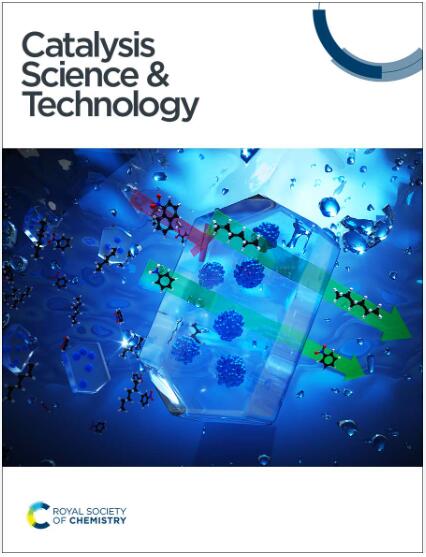Oxime-palladacycle complex supported on magnetic nanoparticles: a recyclable catalyst for Suzuki-type decarbonylative cross-coupling of esters with aryl boronic acid†
IF 4.4
3区 化学
Q2 CHEMISTRY, PHYSICAL
引用次数: 0
Abstract
To simplify the reuse and recovery of catalysts, we have developed a magnetically separable, oxime-based palladacycle complex (Fe3O4@TEOS-palladacycle) and demonstrated that it is a very efficient and versatile catalyst for Suzuki-type decarbonylative cross-coupling of esters with aryl boronic acid in 2-MeTHF under refluxing conditions. The novel catalyst was synthesized using a multi-step process involving surface modification, oxime-functionalization, and palladium immobilization, and characterized by FT-IR, P-XRD, FE-SEM, TEM, EDX, TGA, VSM, XPS, and ICP-OES analysis. This protocol is advantageous due to the utilization of non-toxic, biomass-derived 2-MeTHF as a green solvent medium. The Fe3O4@TEOS-palladacycle was also used as an efficient catalyst for the preparation of boscalid, a significant fungicide, via a decarbonylative approach. Moreover, the solid catalyst could be recovered easily by a simple magnetic separation technique and reused five times without significant loss of its catalytic activity with negligible metal leaching. More importantly, the wide range of functional groups found to be compatible with the given reaction conditions are the main merits of this protocol.

求助全文
约1分钟内获得全文
求助全文
来源期刊

Catalysis Science & Technology
CHEMISTRY, PHYSICAL-
CiteScore
8.70
自引率
6.00%
发文量
587
审稿时长
1.5 months
期刊介绍:
A multidisciplinary journal focusing on cutting edge research across all fundamental science and technological aspects of catalysis.
Editor-in-chief: Bert Weckhuysen
Impact factor: 5.0
Time to first decision (peer reviewed only): 31 days
 求助内容:
求助内容: 应助结果提醒方式:
应助结果提醒方式:


